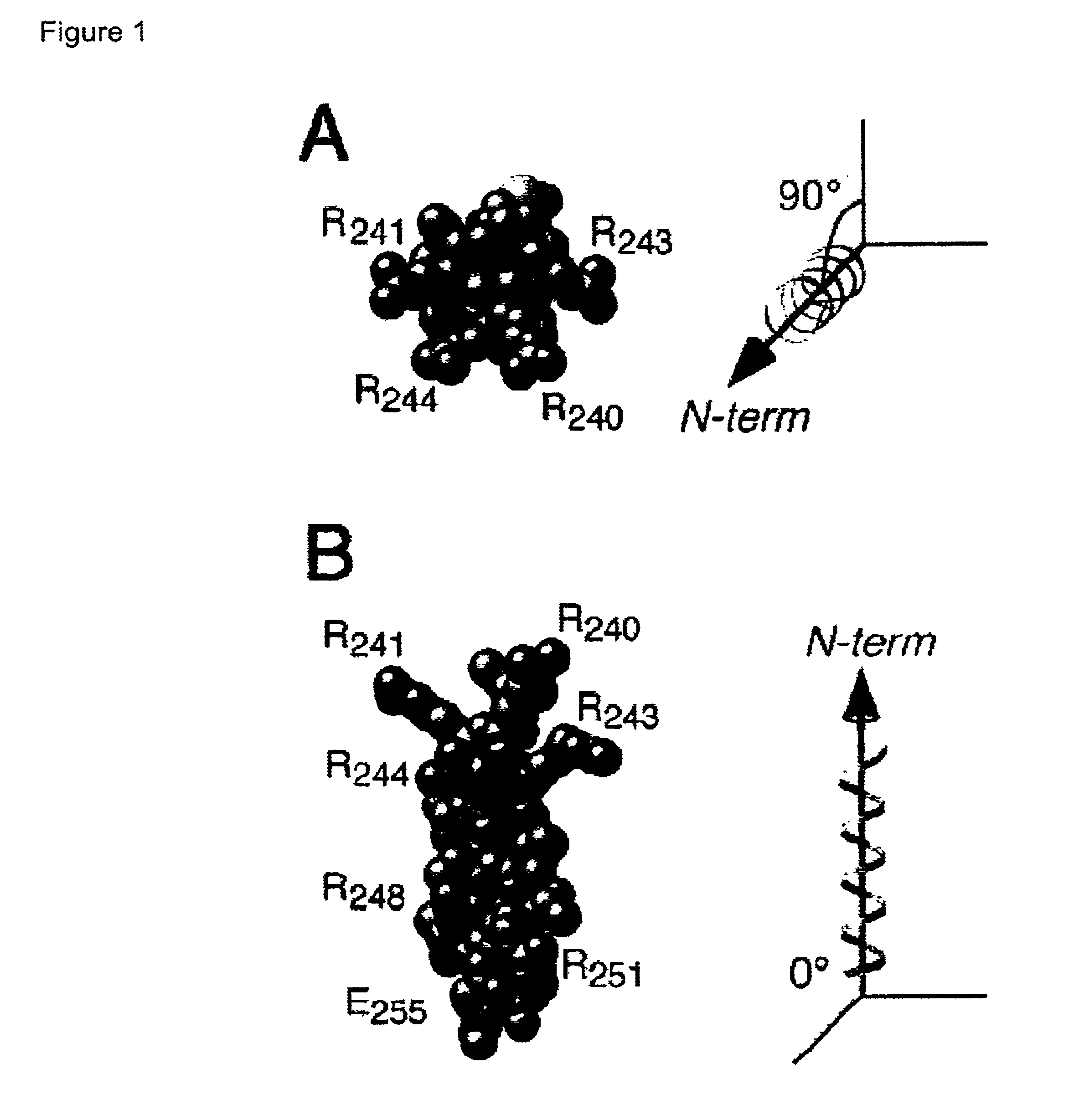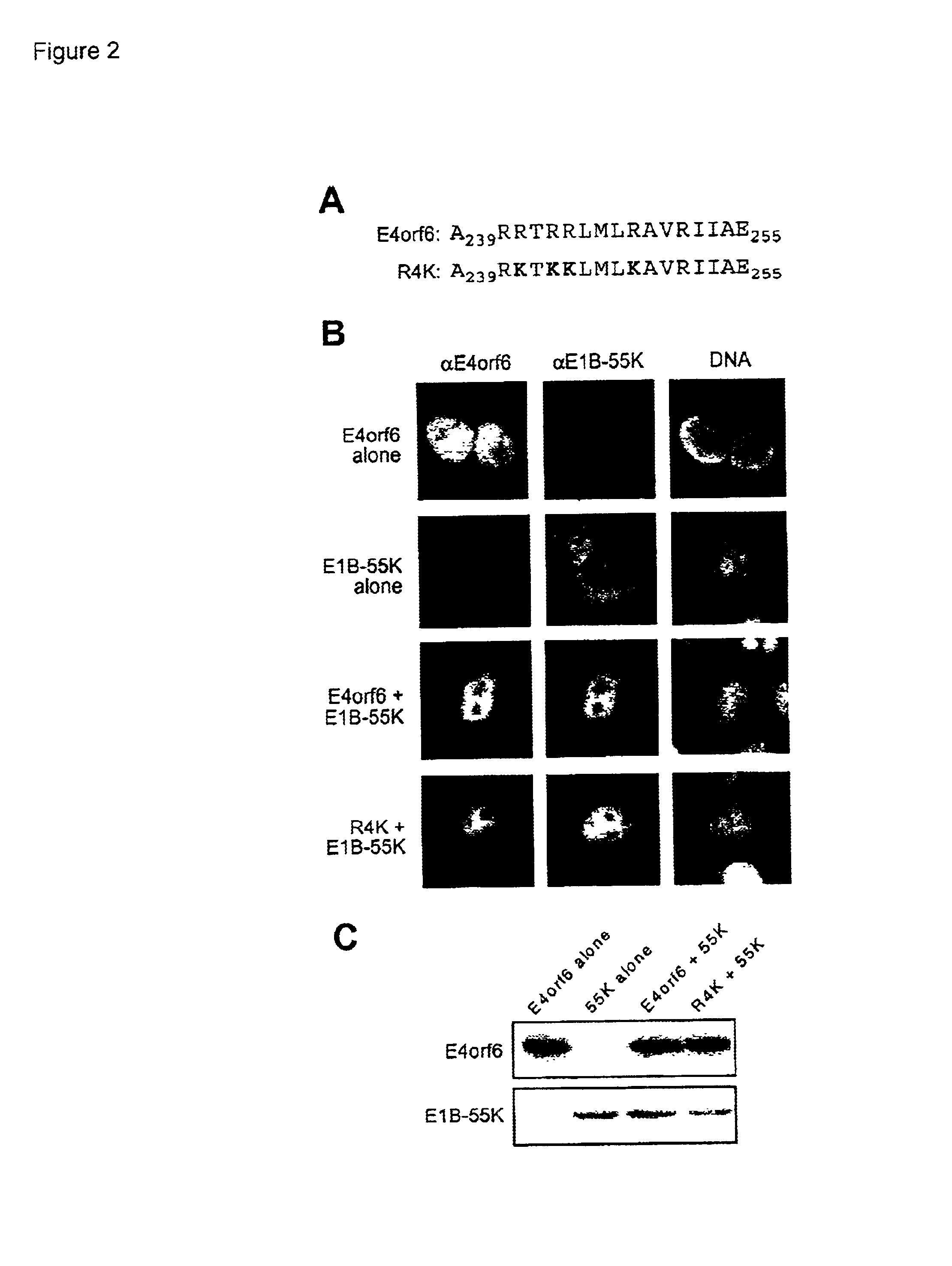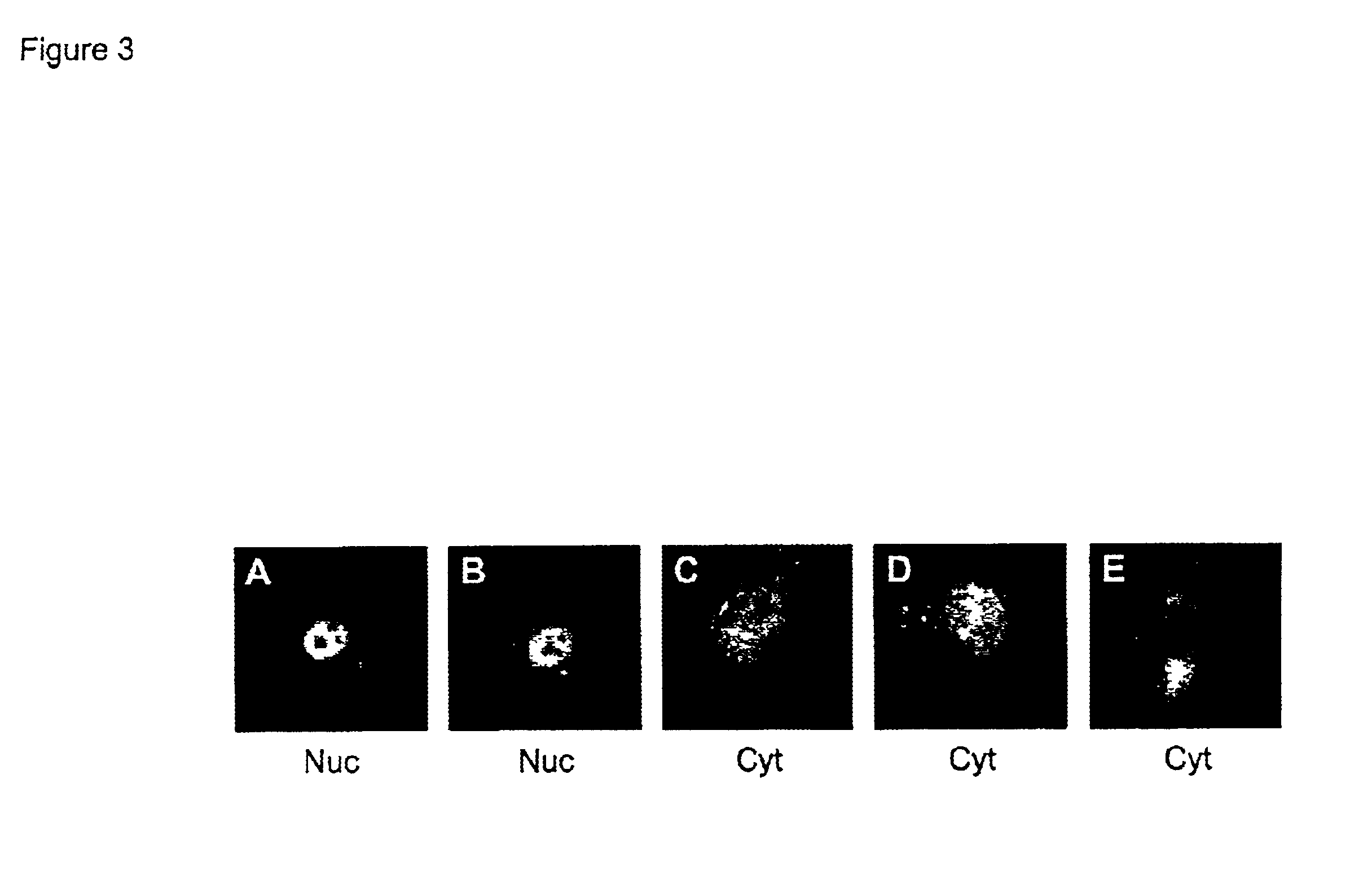Adenovirus E4 protein variants for virus production
a technology of adenovirus and e4 protein, applied in the field of packaging cells, can solve the problems of difficult to create viruses carrying the dna that also lack the viral e4 region, and difficult to create viruses carrying the dna
- Summary
- Abstract
- Description
- Claims
- Application Information
AI Technical Summary
Benefits of technology
Problems solved by technology
Method used
Image
Examples
example 1
Materials and Methods
[0055]Cell culture and viruses. Cell culture media, cell culture supplements and serum were obtained from Life Technologies (Gaithersburg, Md.) through the Tissue Culture Core Laboratory of the Comprehensive Cancer Center of Wake Forest University. HeLa and W162 cells (Weinberg and Ketner (1983) Proc. Natl. Acad. Sci. USA 80:5383-5386) were maintained in Dulbecco-modified Eagle's minimal medium (DMEM) supplemented with 10% newborn calf serum as previously described (Goodrum and Ornelles (1997) J. Virol. 71:548-561). Two strains of HeLa cells were used in this work. The “faster growing” strain of HeLa cells (CCL2.2) was obtained from the American Type Culture Collection in the late 1980s. This strain exhibits the more typical morphology and growth rate (doubling time=20 hrs) of adherent HeLa cells. Another variant of HeLa cells that had been propagated in lab of T. Shenk for a longer period of time is identified as a “slower growing” strain of HeLa cells. The dou...
example 2
Arginine Residues In The Amphipathic α Helix Between Position 239 and 251 Form A Positively Charged Surface-Exposed Domain
[0065]Using circular dichroism spectroscopy, Orlando and Ornelles previously demonstrated that a peptide corresponding to amino acids 239 through 254 of the 294 residue E4orf6 protein can exist as an amphipathic, arginine-faced α helix (Orlando and Ornelles (1999) J. Virol. 73:4600-4610). Variants of the E4orf6 protein that lack residues 241 through 250 or contain a proline in this region were defective. These mutant proteins failed to retain the E1B-55 kDa protein in the nucleus when expressed by transfection in non-infected cells and these mutant proteins failed to promote replication of an E4deletion virus when expressed by transfection in infected cells.
[0066]To identify features of this region that underlie the functional interaction between the E4orf6 and E1B-55 kDa proteins, a molecular model of the α helix was generated. The space-filling model in FIG. 1 ...
example 3
The Basic Nature of Arginines 241 and 243 is Required for E4orf6-E1B-55 Kda Protein Interaction
[0070]To determine the significance of the positive charge at positions occupied by arginines for the E4orf6-E1B-55 kDa protein interaction, a collection of single arginine to glutamic acid replacement variants was created. These variants were tested for their ability to retain the E1B-55 kDa protein in the nucleus. The E4orf6 variants were expressed with the E1B-55 kDa protein by the vaccinia virus T7 / RNA polymerase infection-transfection system and the localization of both proteins determined by double-label indirect immunofluorescence.
[0071]In most cells expressing both R240E and E1B-55 kDa proteins, at least a portion of the E1B-55 kDa protein was detected in the nucleus (FIG. 3A and FIG. 3B). However, like the R4K variant, the R240E variant was not as efficient as the wild-type E4orf6 protein at retaining the E1B-55 kDa protein in the nucleus. Indeed, none of the E4orf6 variants creat...
PUM
| Property | Measurement | Unit |
|---|---|---|
| doubling time | aaaaa | aaaaa |
| volume | aaaaa | aaaaa |
| nucleic acid | aaaaa | aaaaa |
Abstract
Description
Claims
Application Information
 Login to View More
Login to View More - R&D
- Intellectual Property
- Life Sciences
- Materials
- Tech Scout
- Unparalleled Data Quality
- Higher Quality Content
- 60% Fewer Hallucinations
Browse by: Latest US Patents, China's latest patents, Technical Efficacy Thesaurus, Application Domain, Technology Topic, Popular Technical Reports.
© 2025 PatSnap. All rights reserved.Legal|Privacy policy|Modern Slavery Act Transparency Statement|Sitemap|About US| Contact US: help@patsnap.com



